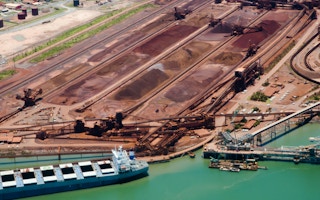Australia’s emissions of climate-changing greenhouse gases are going up and up – and are set to rise by more than 50 per cent over 1990 levels by 2020, according to new research.
Climate Action Tracker (CAT), an independent science-based programme that analyses the emission commitments and actions of countries around the world, says Australia’s present emission levels are about 31 per cent higher than in 1990 and continue to rise.
“In terms of emission effort, Australia will be going in the opposite direction to China and the US, who are putting effort into reducing emissions,” says the CAT analysis.
Emissions calculations
The research says Australia has exerted considerable efforts over the years in order to alter the way its emissions are calculated under the terms of the 1997 Kyoto Protocol.
Australia has insisted on including reductions in emissions from land use and forestry in its emissions calculations. As a consequence, it has sought more allowances for emissions from its industrial − mainly mining − sector.
According to CAT, the data supplied by the Australian government on supposed land and forestry emission reductions lacks transparency. And lobbying for such calculation methods – which continued during the recent global climate negotiations in Lima, Peru − goes against the terms of the Kyoto Protocol.
“
Australia has insisted on including reductions in emissions from land use and forestry in its emissions calculations. As a consequence, it has sought more allowances for emissions from its industrial − mainly mining − sector
“This is just the most recent example,” CAT says, “of Australia lobbying for rules that undermine the integrity of the emissions accounting system as a whole and the rules that carve out special exceptions to the detriment of all, but to the benefit of a few.”
At the 2009 Copenhagen summit on climate change, Australia pledged that it would cut its emissions by 5 per cent below 2000 levels by 2020.
CAT − a project run by a number of international organisations, including the Potsdam Institute for Climate Impact Research and Ecofys, a sustainable energy consultancy − says its assessment of Australia’s emissions’ performance is a reasonable, independent and scientifically-based estimate based on available data and the application of the Kyoto rules as they are generally understood.
Worst performing
Australia was recently named as the worst performing industrial country on the issue of climate change in a report by the Germanwatch thinktank and the Climate Action Network, a group that links more than 900 non-governmental organisations around the world.
Since coming to power in federal elections late last year, the conservative coalition government led by Tony Abbott, Australia’s prime minister, has done away with a clean energy bill and championed the country’s iron ore and coal mining sectors.
In recent years, Australia has been hit by a series of severe droughts and record-breaking high temperatures, with 2013 the hottest year since records began more than a century ago.
This year’s spring weather in Australia has also been unusually hot, with temperatures of more than 40˚C being recorded over several days in parts of the country.










